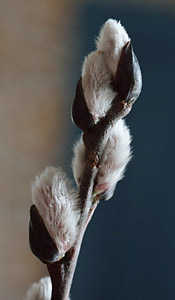 maps
maps



04/23/02

 maps
maps

| Wildflowers of the Westborough Reservoir | 
|

04/23/02 |

|
Between 1969 and 1971, the town acquired 144 additional acres of conservation land to protect the Reservoir's watershed after the construction of the Mass Pike in the late 1950s. The area along Bowman Street was replanted with over 1,000 pines, and nature trails were established to create a conservation area, which town residents still enjoy today. The Bowman Street Conservation Area is accessible from a parking lot on Bowman Street and from Minuteman Park, established along Upton Road in 1975.
The Westborough Reservoir and Bowman Street Conservation areas are laced with trails through varied
terrain, which provides a range of growing environments for wildflowers. The plants range from
commonplace to rare and protected. The 80 or so wildflowers shown here are presented roughly in the
order in which they bloom, month by month, from March through October. Similarly, a separate article
presents other local wildflowers found in and around
Westborough.
 |
 |
 |
Pussy Willow, Salicaceae family (Salicaceae)
Pussy willow (Salix discolor) is a clumped, shrubby plant that heralds the coming of spring with small, furry, gray catkins. It often starts to bloom in early March at the Reservoir, marking the beginning of wildflower season. The catkins are actually dense clusters of very simple flowers that lack petals.
Pussy willow bears male and female flowers on separate plants. After the furry catkins have been out for a while, male or female flower parts emerge from them. Insects carry the sticky yellow pollen from male flower to female flower as they forage.
Historically, the bark of most willows was used to relieve pain and lower fevers. Willow bark contains a substance that is chemically related to aspirin, which has since replaced it in modern medicine. Both the bark and the catkins of pussy willow were collected in the spring for use in medicines.
Skunk Cabbage, Arum family (Araceae), Native
 |

Foul-smelling when stepped on or broken, skunk cabbage is pollinated by early bees and by
flies. Recent research shows that parts of the plant generate heat as they come up, perhaps
helping the plant to grow through snow or to attract its pollinators. A few weeks after the
blossoms appear, the familiar green
leaves unfurl and grow large.
Marsh Marigold, Buttercup family (Ranunculaceae), Native

|

The flowers of marsh marigold look yellow to human eyes, but bees see them differently. They see ultraviolet
(UV) wavelengths that we do not perceive. To bees, the marsh marigold flowers have a dark center, like a
bull's-eye, that helps to guide them to nectar. The flowers absorb UV light especially strongly toward the
center, so they look darker there to the bees.
Common Dandelion, Composite or Daisy family (Compositae), Alien

|
| |
Although a variety of insects visit the yellow flowers, looking for nectar early in the season, dandelion flowers produce seeds without being pollinated. These seeds are genetically the same as the parent plant. They appear in the familiar fuzzy ball-shaped head and blow away on the wind.
People have long used dandelions for food and medicine. The deep taproot, which helps the plant
survive nature's droughts and homeowners' digging, has been an ingredient in medicines and salads.
Young dandelion leaves have also gone into salads and been boiled as greens. The flowers and flower
buds have been fried in batter. The flowers are also reputed to make a sweet wine.
Northern Downy Violet, Violet family (Violaceae), Native
| show TOC frame | Table of Contents | 
|
| A more printable copy may be found here. Also visit our other photography pages at our main site. 

|  Home /
Contact
Home /
Contact
| |
| Copyright © Anne A. Reid 1999-2002 Photographs copyright © Garry K. Kessler 1999-2002 |
 |
|
|